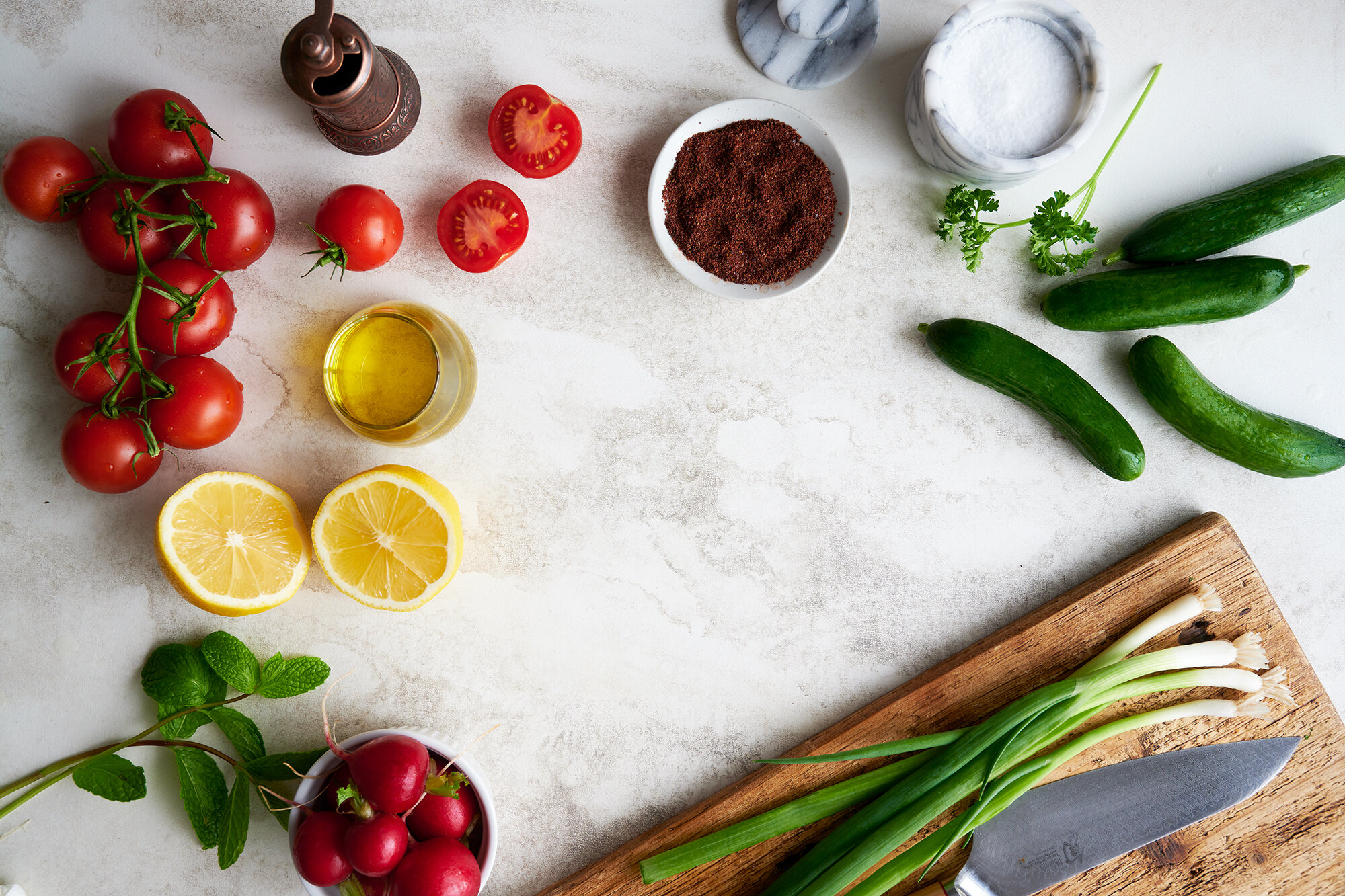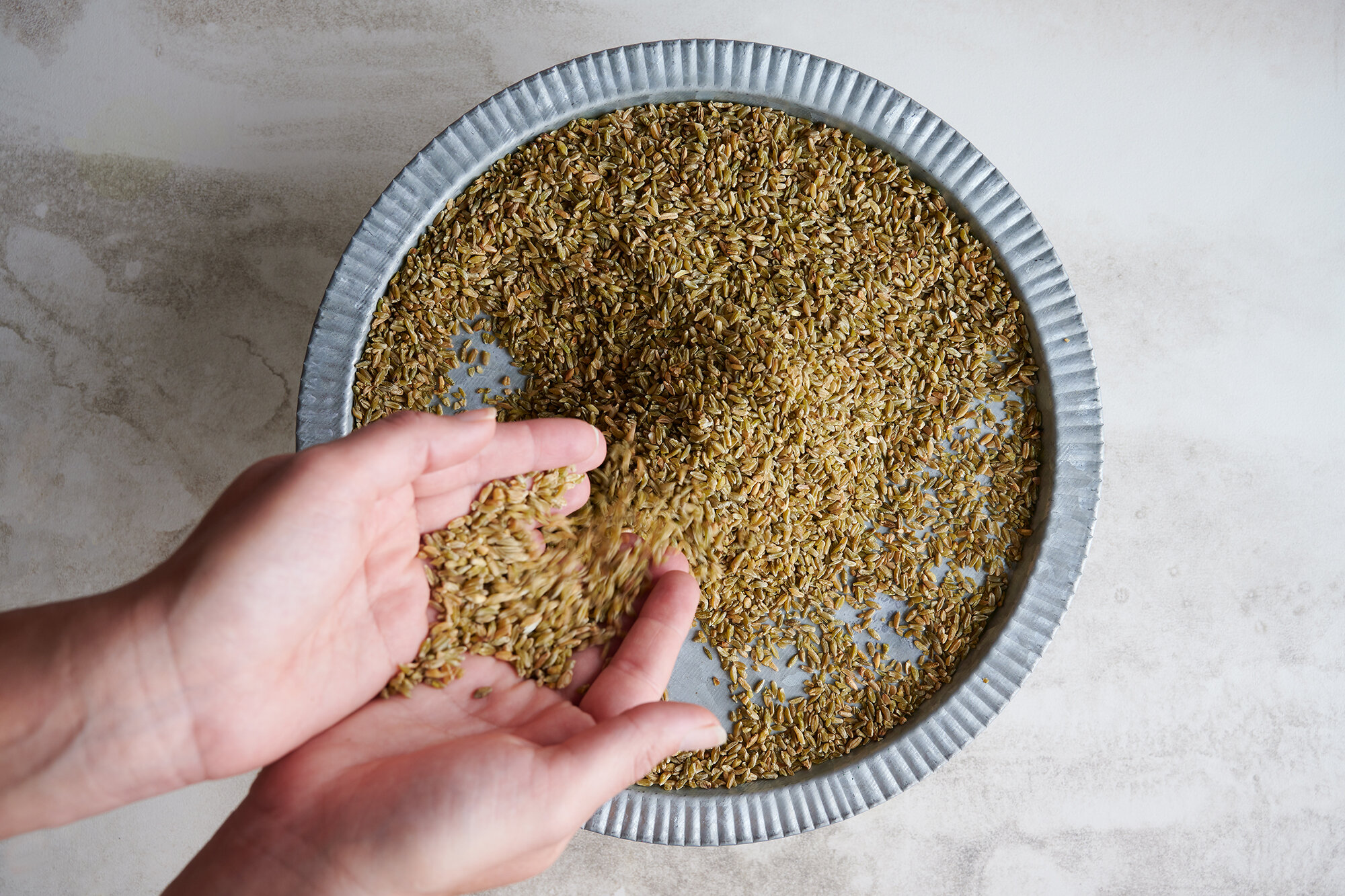Get Your Freekeh On
Growing up in Syria, the memories of home-cooked dinners with my family live rent-free in my brain.
The spark of my mother igniting our gas stove, the sound of the dull knife on the cutting board, and the smell of smoke and spices that remained in the air long after dinner (speaking of rent-free, I’m sure those smells are embedded in those walls forever). Looking back, it’s clear to me now that family dinners represented so much more than a simple meal; the food we shared was a labor of love and something that bonded us and connected us to our culture.
Isn’t it funny how memories of the most mundane moments of your childhood can damn near bring you to tears when you think about them? I’m not crying, you’re crying!
From Homs, Syria to L.A. of the U.S.A. I couldn’t be farther away from my birthplace, but the same food and flavors of my own childhood fill my kitchen. How cool is that? I occasionally have to make some ingredient modifications, of course, but I’m lucky to live in a city where I can run down to the Mediterranean market to pick up grape leaves at any godless hour of the day. Being so far from Syria, I like that my kids will grow up tasting the same foods I ate when I was their age.
Now don’t get it twisted, I’m not above the occasional frozen pizza or Trader Joe’s potstickers. I’ll just put it this way: my kids eat hummus daily; so I’d like to think that means I’m not a total failure :)
Growing up, freekeh made an appearance on our dinner table more often than not; it’s a dish that hasn’t quite made its way to the U.S. but is one of my favorite dinnertime staples (and plus it’s kinda fun to say the word, freekeh). If you consider yourself to be a trendsetter, and/or a lover of beautiful food with a rich tradition, you have to try this recipe for yourself.
The funny thing about Syrian recipes is that they’re passed down verbally from generation to generation. Nothing is written down. I still call my mom to this day to remind me of how to make something. She tells me a little bit of this, add some of that... nothing is measured, and everything is intuitive.
By tasting every layer of the dish at every stage of the process, I’ve learned to replicate my memory of what the dish tastes like so I can put it onto paper to share with all of you. So when I share these recipes, just know that they are my interpretation.
No two freekeh recipes are the same. So give this a try, and if you feel like it’s missing anything, just add a little bit of this, add some of that...
ABOUT FREEKEH
Packed full of vitamins, minerals, protein and fiber, I’m a little surprised the freekeh craze hasn’t caught on. That said, it is available in most grocery stores, so if you look for it, you’ll find it!
Freekeh is essentially wheat that is harvested early. The green grain is harvested, roasted, and shelled, leaving behind a smooth grain with a slightly nutty or earthy taste. Technically, the word freekeh describes the preparation method; but if you buy freekeh at the store, you can count on it being wheat. Freekeh can be used in place of more popular grains like quinoa, rice, oats, or farro, so there are tons of opportunities to try this recipe and use the leftovers in other dishes.
In Syria, freekeh is commonly paired with either chicken, slow roasted beef or lamb, and topped with toasted nuts. This main dish is always served with a Syrian salad and mint yogurt sauce.
Today, I’m putting a fun, vegetarian twist on this traditional dish and I’m tossing all the good stuff together into one plate! Pair with your meat of choice (if that’s your thing!) or eat it alone for an all-in-one meal. Packed with veggies, herbs, and topped with a cold, creamy yogurt sauce… oooh baby. I just can’t wait for you to try it for yourself.
Ingredients:
THE FREEKEH:
2 cups freekeh
3 tbsp ghee
1 onion finely chopped
5 cups vegetable broth
salt and pepper to taste
THE SALAD:
2 large tomatoes, chopped
4 white radishes, thinly sliced
4 persian cucumber, chopped
1 lemon, juiced
1/4 cup extra virgin olive oil
1 tbsp sumac
¼ cup mint, chopped or 2 tablespoons dried mint
¼ cup parsley, chopped
salt and pepper to taste
THE SAUCE
2 cups plain yogurt, for serving (Splurge on the good quality stuff)
2 cups cucumber, finely chopped
1 lemon, juiced
2 tbsp dried mint
½ tsp salt
Garnish*
Toasted slivered almonds and pomegranate seeds.
*optional
Method:
THE FREEKEH:
Add ghee to a nonstick pot over medium heat and add diced onion, saute and stir frequently for about 5 -8 minutes or until onions are nice and caramelized.
Add freekeh and toast until golden brown, this step is very important, it brings out the flavor of the freekeh and helps it keep its shape.
Add your broth (I like to start with hot boiled broth). Once it comes to a slow boil, lower heat, and cover. Add a pinch of salt and pepper to your liking. Cook for 30 minutes or until water is absorbed and freekeh is tender. (It’s similar to cooking rice). Set aside.
THE SALAD:
Chop your vegetables and toss them into a bowl.
In a dressing jar, add lemon juice, olive oil, sumac, mint, parsley, then salt and pepper to taste. Mix together by shaking the jar.
Pour sauce over the salad, set aside.
THE SAUCE:
In another bowl, make your mint yogurt sauce by mixing all the ingredients together.
THE ASSEMBLY:
Put a scoop of freekeh in each bowl. Top it with the salad and mix together thoroughly. Garnish with toasted almonds, pomegranate seeds, and a generous dollop of yogurt sauce.
Ok now, take a bite! What do you think?!
Thanks for getting freekeh with me!
In all seriousness, it means the world to me when you get excited about all the Syrian dishes and stories I share here and on my Instagram. If you want me to share more recipes like this, shoot me a DM or like this blog!






